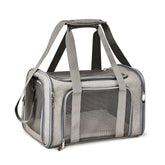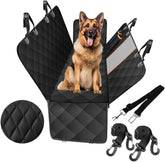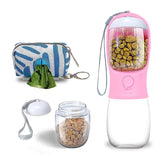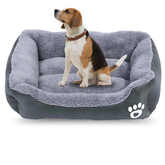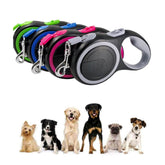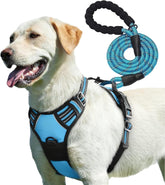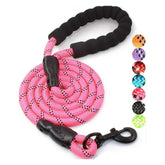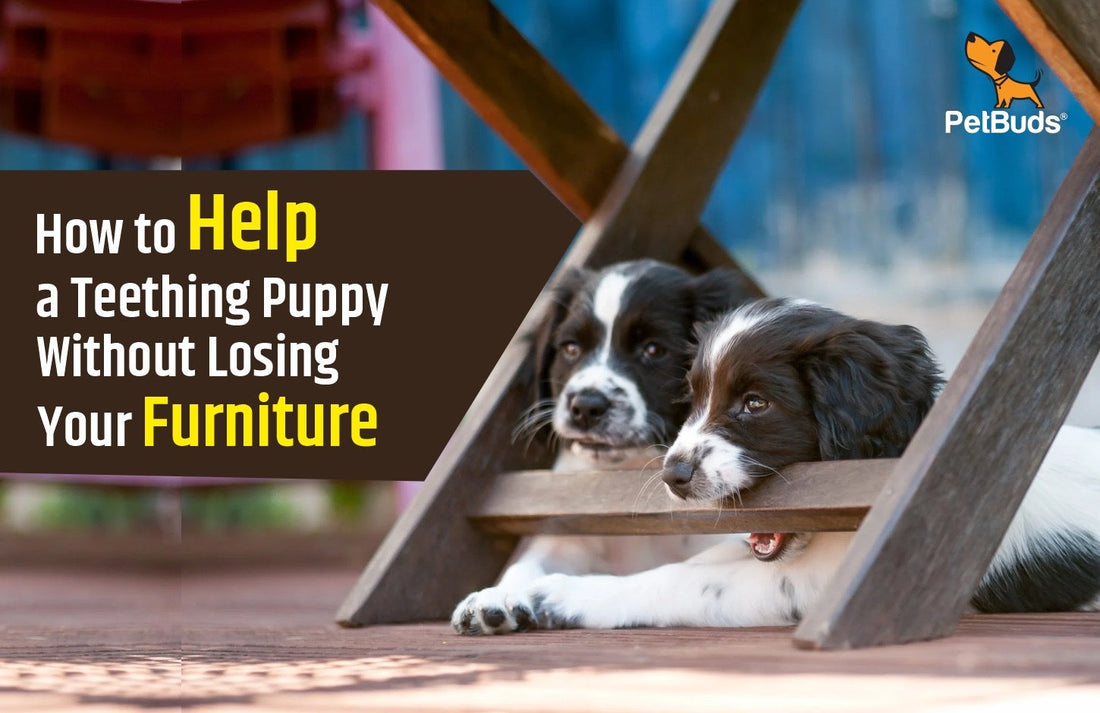If happiness had a face, then it would definitely be puppies. They are the smallest and cutest creatures that can make your heart melt every time they look at you. However, once they turn into cute monsters, you can’t do anything but save your shoes, coffee table legs, sofa, and whatnot.
Well, all of it is because now they are turning into a chewing machine. And, if you’re wondering how to help a teething puppy without sacrificing your sanity or your furniture, then you are at the right place.
In this blog, you will explore how you can help your pup during his teething and find alternatives that can help you protect your furniture.
Why Do Puppies Teethe?
There are phases of development in humans and dogs. And, teething is a natural and a little uncomfortable stage in a puppy’s development. Like human babies, they grow a set of baby teeth; it’s the same way for puppies, too.
During this time, the teething process starts around 3 weeks old and continues till they are about 6 to 7 months old. At this time, their gums become sore, their mouths feel weird, and their number one priority each day is to chew everything literally.
However, chewing helps them to soothe the discomfort they are going through. However, they don’t understand what’s right and wrong to chew.
Signs Your Puppy is Teething
Before you go blaming your pup for chewing your charger (again), look out for these common signs of teething:
- Excessive chewing
- Drooling
- Whimpering or fussiness
- Swollen or red gums
- Loss of baby teeth (you might even find one on the floor!)
- Reluctance to eat dry food
If this sounds like your dog’s current behavior, don’t panic—there is a way to survive teething without turning your home into a chew zone.
How to Help a Teething Puppy
Now that we know what’s happening, let’s talk about how to help a teething puppy and keep your precious belongings intact.
1. Invest in Puppy Chew Toys
When teething pain kicks in, your puppy needs something safe and satisfying to chew on. And no, your couch doesn’t count.
Chew toys for puppies are specifically designed to be soft enough for sensitive gums but tough enough to last through the gnawing.
Look for:
- Doughnut Treat Dispenser Indestructible and Interactive Dog Toy : These are built to survive the apocalypse (or your Labrador).
- Indestructible Mango Shaped Rubber Dog Chew Toys : These keep your pup engaged and save your shoes at the same time.
- Pineapple Dog Treat Toys for Pet Teeth Cleaning : The different surfaces provide extra relief for sore gums.
Keep a few on rotation so your pup doesn’t get bored and go searching for… less appropriate options.
Pro Tip: Put some puppy chew toys in the freezer. The cold helps soothe their aching gums like magic.
2. Use Healthy Dog Treats as a Distraction
Who says bribery doesn’t work? Sometimes, healthy dog treats can pull your puppy away from the leg of your dining chair.
Choose puppy-safe treats made with soothing ingredients like chamomile, turkey, or sweet potato. Not only do they help distract from chewing, but some treats also promote dental health and aid digestion.
Look for treats that are:
- Grain-free or all-natural
- Suitable for puppies
- Soft or freezer-friendly
You can even stuff them into chew toys or treat-dispensing puzzles to keep your teething pup happily entertained.
3. Puppy-Proof Your Home
This isn’t just about picking things up off the floor. Puppy-proofing during the teething phase is about preventing destruction before it happens.
Here’s how:
- Put anything chewable (shoes, cords, remote controls) out of reach.
- Hide valuables behind closed doors or in drawers.
- Use bitter spray on furniture legs or items your dog tends to target.
- Create a “chew zone” with all your puppy’s toys, treats, and their chew proof dog bed.
Having a designated area that feels safe and full of chew-friendly items can work wonders.
4. Try Frozen Foods
Some human foods, when prepared properly, can serve as natural teething relief:
- Frozen carrots
- Sliced cucumber
- Frozen banana chunks
- Ice cubes made from low-sodium bone broth
These not only provide gum relief but can also be a healthy and tasty snack. Always supervise your pup with frozen foods to avoid choking hazards.
5. Redirect and Reinforce Good Behavior
Every time your pup goes for a table leg, redirect them to indestructible interactive dog toys. When they chew the toy instead, reward them.
Use commands like:
- “Leave it” (when they approach your furniture)
- “Take it” (when offering a chew toy)
- “Good boy/girl!” (when they get it right)
Consistency is key. Soon, they’ll learn that chewing furniture is no fun, and chewing toys can get them treats and a sense of praise.
Chew Toys: The Saviour for Puppies
If there's one thing you take from this blog, it's this:
- Chew toys are your first line of defense against teething destruction.Without them, you’re basically inviting your puppy to do a full-blown renovation of your house with their teeth.
- Invest in indestructible dog toys that are specifically made for aggressive chewers or teething puppies. Combine them with healthy dog treats and structured training, and you’ll breeze through the teething phase with furniture (and sanity) intact.
When to See a Vet
If your puppy:
- Refuses to eat for more than 24 hours
- Has unusually swollen gums or bleeding
- Is in extreme discomfort
- Still has baby teeth after 7–8 months
…it’s time to book a vet appointment. Sometimes, retained baby teeth can cause infections or alignment issues that need professional attention.
Final Thoughts
Teething may feel like a wild roller coaster of gnawed furniture, chewed fingers, and sleepless nights, but trust us, it’s temporary.
With a little planning, a lot of chew toys for puppies, and some clever distraction strategies, you can learn how to help a teething puppy without losing your furniture or your mind.
